- Resources
- Digital methane management: an industry perspective
Resources
Digital methane management: an industry perspective
Published: January 27, 2020 by Rick Velleu
US $30 billion worth of methane released into the atmosphere each year
With US $30 billion worth of methane released into the atmosphere each year from industry, many of the world’s largest publicly traded oil and gas companies, and select national oil companies and independents, have started taking steps towards setting and achieving methane reduction targets for their operations.
This survey identifies the role digital technologies can play in managing methane emissions and captures the perspectives of key industry stakeholders on the future of digital methane. The goals: to understand the primary drivers and challenges affiliated with methane reduction today and to identify opportunities where digital solutions can improve and enhance methane management.
Key finding 1
The oil and gas industry recognizes the methane challenge but has yet to capitalize upon the economic values associated with it.
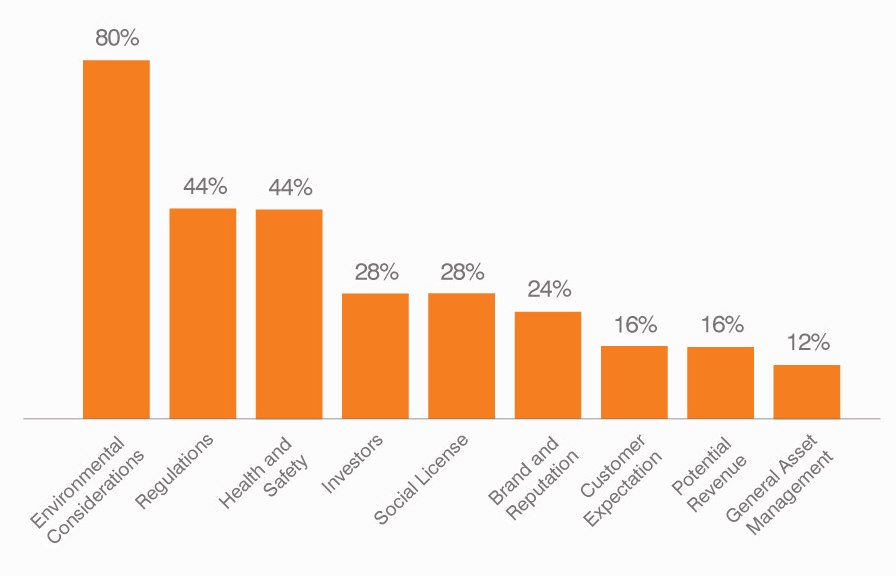
% of respondents ranking a particular driver in their top 3 choices
Key finding 2
The industry is gradually shifting to digitization to manage methane emissions.
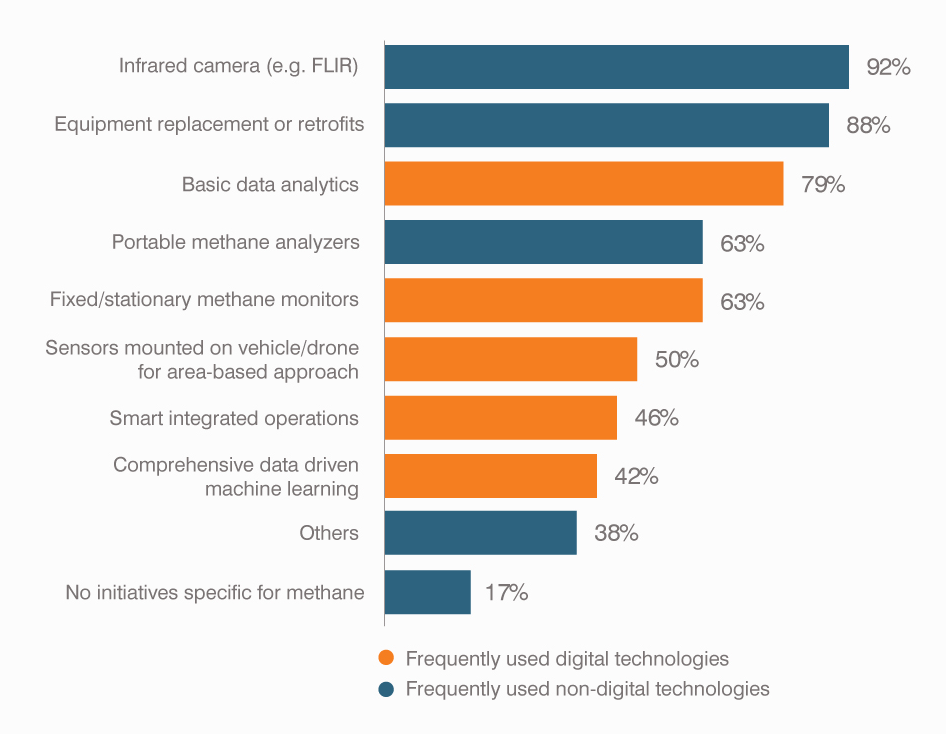
Key finding 3
Lack of visibility into technology options and investment incentives are constraining adoption at scale.
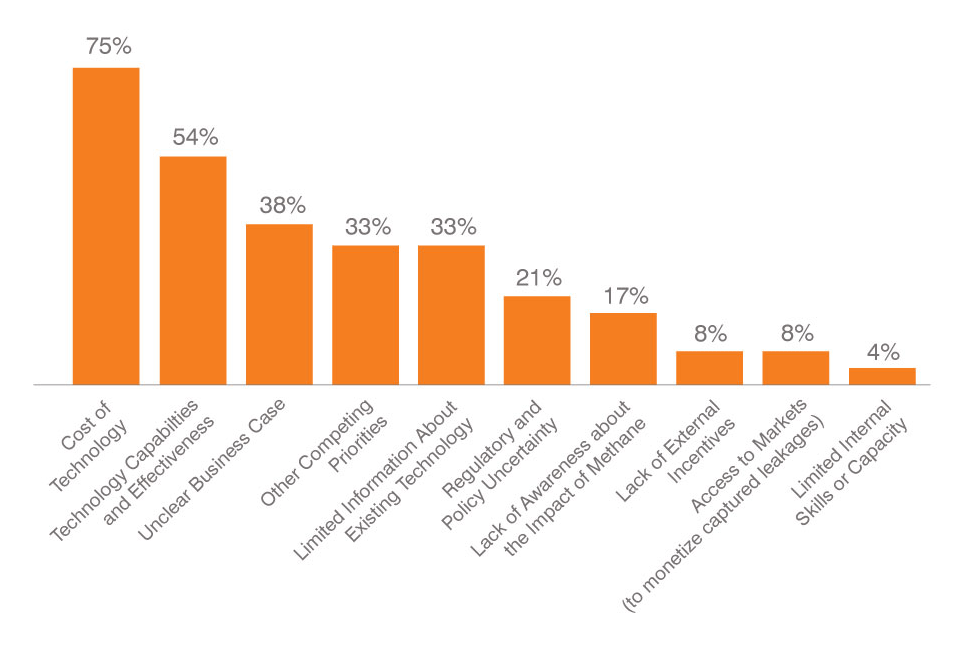
% of respondents that selected frequently or very frequently
Key finding 4
Despite the challenges, industry remains confident in the value of digitization.
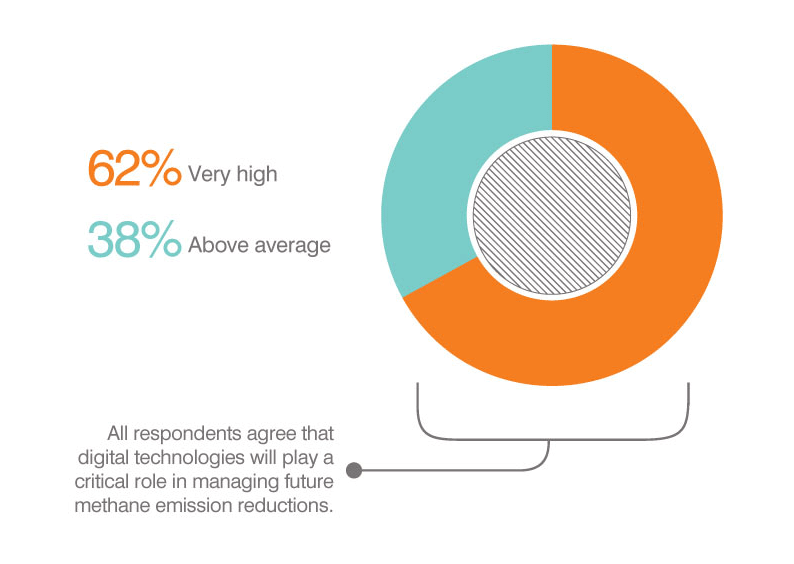
Key finding 5
Increased engagement from chief digital officers is pivotal to accelerating the shift, but is currently limited.
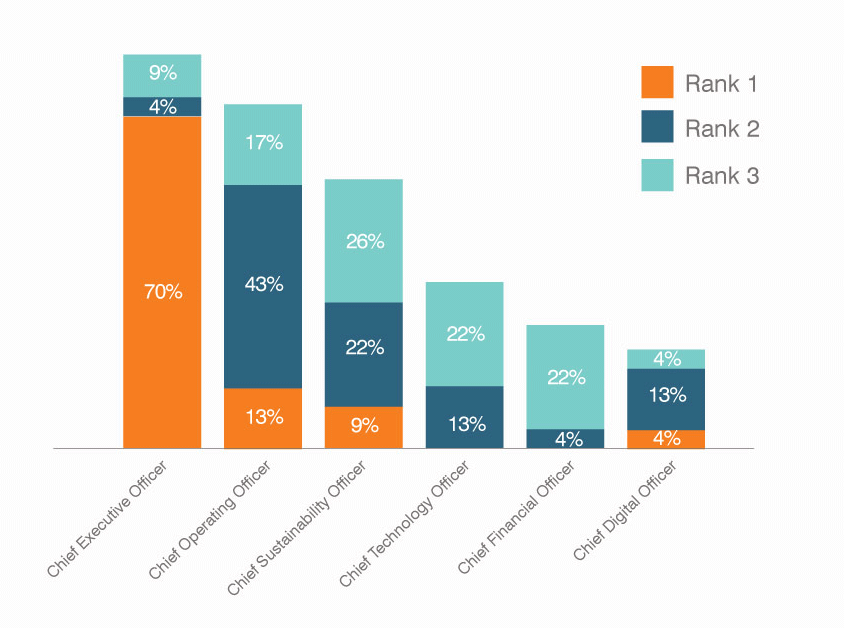
Opportunities
To realize the transformation to a digital methane future, an enabling ecosystem is required.
This can be achieved by forging new partnerships and alliances that proactively engage operators, technology companies, civil society and investors around key opportunities to unlock trapped value:
Opportunity 1: operationalize shared industry commitment
To support and catalyze progress towards long-term methane emission reduction goals, tactical engagement vehicles — such as regional or asset-specific working groups, and data-sharing platforms — could provide industry a platform to share best practices and lessons learned, incubate broader solutioning insights to common pain points, and design tailored partnership frameworks to co-finance and catalyze technology adoption at scale.
Opportunity 2: strengthen technology’s value proposition through innovative commercial models
In a cost-sensitive environment, new commercial models such as product-as-a-service and performance-based-contracting can support a more compelling positive return on investment. For example, oilfield service companies offering predictive maintenance services can share a portion of the benefits realized from reduced downtime.
Opportunity 3: build a compelling business case for action
It is observed that 40-50% of the estimated 76 million metric tons of methane leaked from the industry annually can be minimized with the technologies of today at no net cost. Digital methane management solutions may be key to increasing this percentage. To do so, the business case for methane emissions should be built into the broader operational excellence agenda to surface the full triple bottom line value of investments made.
Download
Insights from this survey highlight the oil and gas industry’s recognition of the methane challenge, as well as the potential of digital technologies such as data analytics, autonomous robots, drones, IoT, artificial intelligence, and wearables to mitigate and even proactively prevent methane emissions before they occur.
